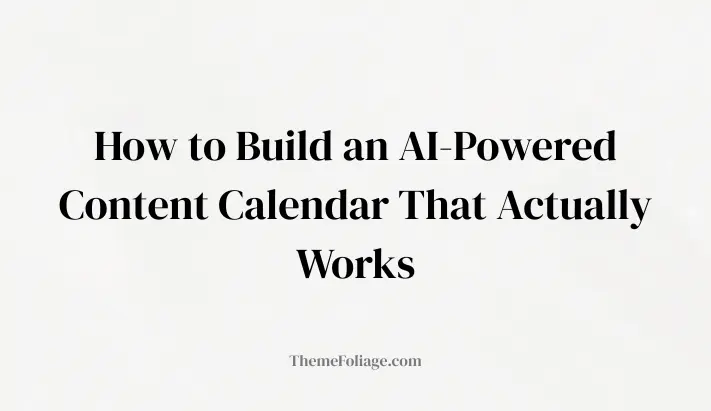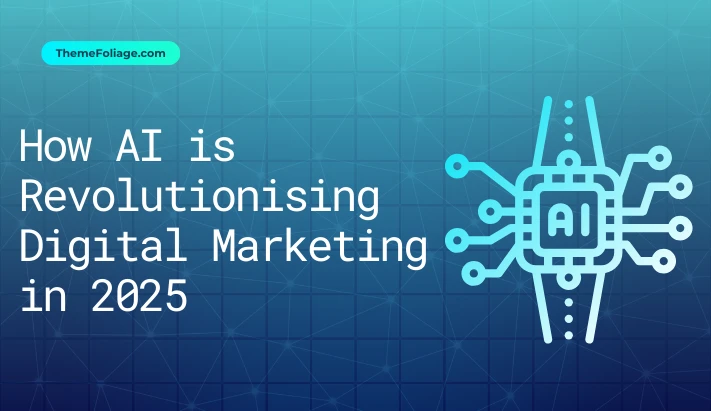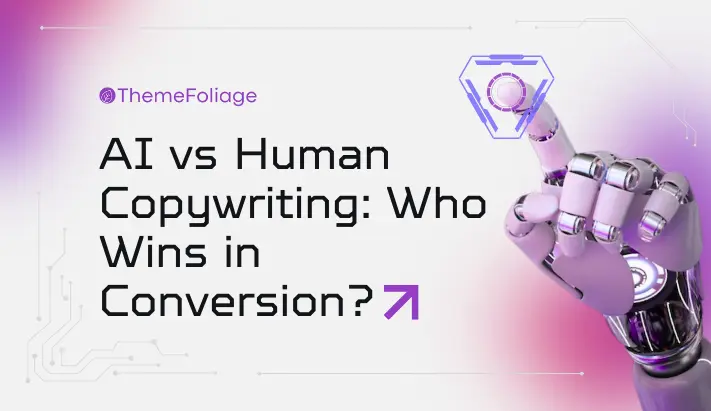If you’re still using spreadsheets to plan your content, you’re leaving growth on the table. In 2025, the best marketers are ditching manual systems and building AI-powered content calendars that automate ideation, scheduling, optimization, and even content creation.
The result? Smarter campaigns, less stress, and more conversions.
Here’s your step-by-step playbook for building a content calendar that doesn’t just organize your publishing, it powers business growth.
Why Use AI for Content Planning?
Traditional content calendars often fail for two reasons: they take too much time to manage, and they don’t adapt fast enough to shifting trends. AI fixes both problems.
With AI-driven tools, you can:
- Predict trending topics using live search and social data.
- Suggest the best posting times for each channel.
- Auto-generate outlines, headlines, and drafts in minutes.
- Analyse performance and adjust your strategy dynamically.
Instead of just planning content, AI helps you create a living, breathing calendar that evolves as your audience and market do.
Step 1: Choose Your AI Stack
The foundation of your calendar is the tools you use. Here’s a recommended AI stack for 2025:
| Tool | Purpose |
|---|---|
| ClickUp + AI Plugin | Task management + editorial scheduling |
| Notion AI | Brainstorming, outlining, editorial planning |
| Easy-Peasy.AI | Quick idea prompts + short-form copy generation |
| Surfer SEO | Keyword planning + on-page optimization |
| Zapier | Workflow automation (publishing, reminders) |
Pro Tip: Use ClickUp as your central hub. Assign deadlines, link tasks to blog posts, and connect Zapier to your CMS for automated publishing and team notifications.
Step 2: Define Your Content Pillars
AI works best when it has clear direction. That’s where content pillars come in. Pick 3–5 themes that align with your niche and customer interests.
For example, a digital marketer’s pillars might be:
- AI Tools & Reviews
- SEO Strategies
- Affiliate Marketing
- Email Automation
- Social Media Growth Hacks
These pillars not only help you stay consistent, but also build topical authority—a major SEO factor in 2025.
Step 3: Create a Weekly Publishing Rhythm
Consistency beats intensity. Instead of sporadic posting, define a publishing rhythm that your audience can rely on.
Here’s a sample weekly structure:
- Monday: How-to guide (educational, evergreen)
- Wednesday: Tool review (affiliate-friendly, SEO-rich)
- Friday: Case study or trend analysis (high-value authority builder)
- Sunday: Newsletter or roundup (community engagement)
AI can generate outlines and content suggestions for each slot 2–3 weeks in advance, so you always stay ahead of schedule.
Step 4: Automate Content Creation
Here’s where AI really shines. Instead of starting from scratch, use AI to accelerate the writing process.
AI Workflow Example:
- Use ChatGPT, Jasper, Gemini, or Copilot to generate first-draft blog posts, social captions, and meta descriptions.
- Edit for tone, accuracy, and brand voice (human touch matters).
- Run drafts through Surfer SEO for keyword optimization, readability, and SERP alignment.
- Schedule final versions via ClickUp or directly on WordPress.
This workflow transforms content creation from a week-long process into a 1–2 day cycle.
Step 5: Track Performance & Iterate
A calendar isn’t useful if it doesn’t improve your results. Use analytics tools to measure performance and let AI suggest adjustments.
- Google Analytics + Search Console: Track traffic, bounce rates, and keyword rankings.
- ClickUp Dashboards: Monitor task completion, publishing frequency, and deadlines.
- AI Insights: Let tools like Notion AI or ChatGPT analyse patterns and recommend new topics.
Example: If your Friday case studies drive higher conversions than your Monday how-to guides, you may want to double down on case-study content.
Bonus: Downloadable AI Content Calendar Template
Want to skip the setup? Build your system faster with a plug-and-play calendar template that includes:
- Pre-loaded publishing slots (how-tos, reviews, case studies, newsletters)
- Automation triggers for task reminders via Zapier
- SEO prompts for keyword placement and meta descriptions
- Analytics dashboard for tracking results
Real-World Example: AI Calendar in Action
A mid-sized SaaS company shifted from a manual spreadsheet to an AI-powered calendar using ClickUp, Zapier, and Surfer SEO.
Before AI:
- Content planning took 12–15 hours per week.
- Missed deadlines due to lack of coordination.
- Limited insights into what content worked best.
After AI:
- Planning time reduced to just 4 hours weekly.
- Automated scheduling synced blog posts with LinkedIn and Twitter.
- SEO-optimized posts ranked faster, leading to a 35% increase in organic traffic within 3 months.
This shows how automation doesn’t just save time, it compounds results.
Final Thoughts
An AI-powered content calendar isn’t just a productivity hack, it’s a growth engine. By blending automation with smart strategy, you’ll publish more consistently, rank faster, and convert better.
The key isn’t to replace humans with AI, it’s to delegate repetitive tasks to AI while keeping strategy, storytelling, and creativity in human hands.
The future of marketing isn’t human vs machine. It’s human + machine working together to deliver smarter, faster, and more effective content.



